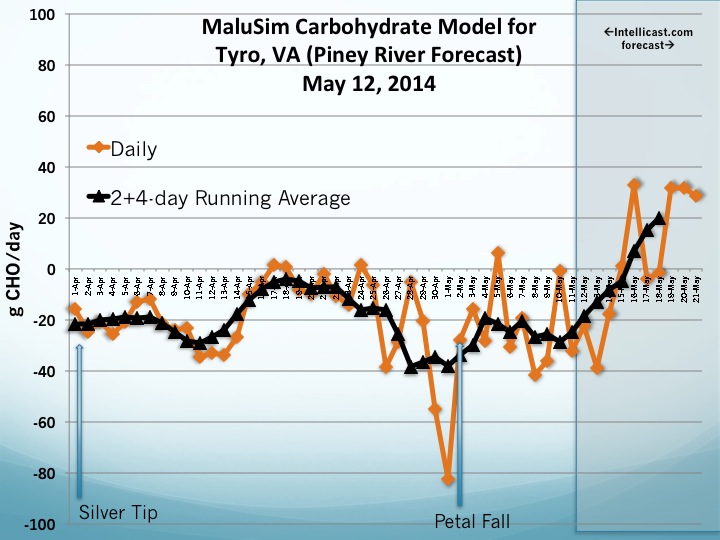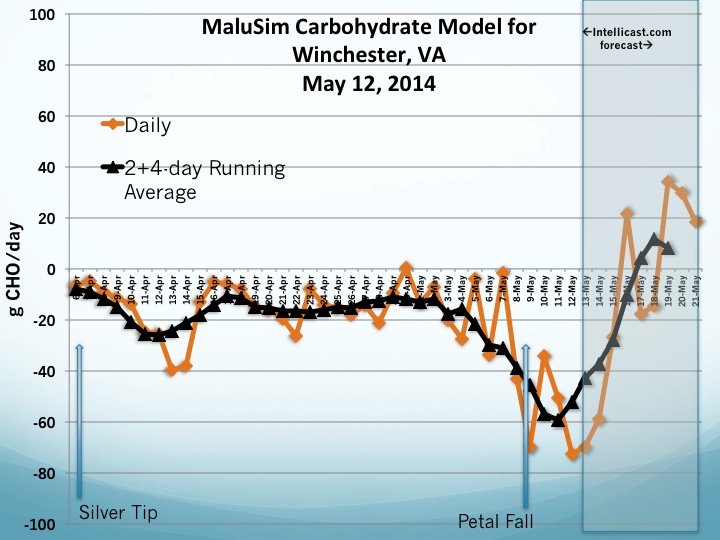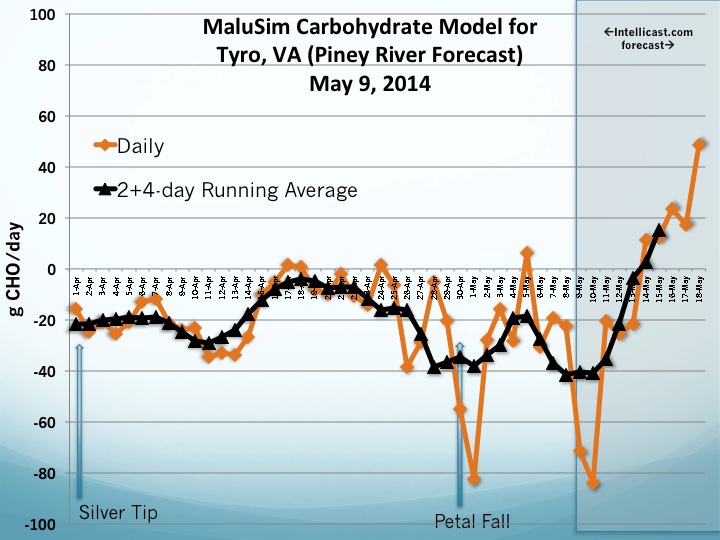July 21, 2014
Winchester, VA—The faculty, staff, and students at Virginia Tech’s Alson H. Smith, Jr. Agricultural Research and Extension Center and Virginia Cooperative Extension’s Frederick County Office will be hosting a public open house on August 16 from 1:00 PM to 5:00 PM. The Center’s scientists will provide an overview of their research projects and outreach efforts through hands-on activities, posters, and guided tours of the experimental vineyards and orchards.
This is an open event—all are welcome! Come meet the scientists who work at the Center. Cold drinks and locally made desserts will be provided. The open house will be held rain or shine.
Contact: For more information contact Debra Marple at: 540-869-2560 or dmarple@vt.edu.
About the The Alson H. Smith, Jr. Agricultural Research and Extension Center: This Virginia Tech laboratory serves Virginia’s commercial fruit and value-added, horticultural food crops industries through research, educational programs, development of sustainable production systems and technologies, and increased public knowledge of horticultural opportunities and benefits. Please visit our website to learn more about our current research and information on tree fruit and grapes. http://www.arec.vaes.vt.edu/alson-h-smith/
Directions: The facility is located at 595 Laurel Grove Road, Winchester, VA 22602.
From I-81: take the Stephens City exit (Exit 307). Go west into Stephens City on Fairfax Street. Proceed straight through Stephens City onto Rt. 631 (Fairfax Street becomes Marlboro Road). Continue west on Marlboro Road for approximately 3.5 miles. When Marlboro Road dead-ends at a “T”, turn right (north) onto Middle Road (Rt. 628). Proceed on Middle Road for 1.5 miles. Turn left (west) onto Laurel Grove Road (Rt. 629). Travel 0.8 miles to the Center, which will be on your left.
If you are a person with a disability and desire any assistive devices, services or other accommodations to participate in this activity, please contact Debra Marple (AHS AREC) at (540-869-2560 X19*) during business hours of 7:30 am and 4:00 p.m. to discuss accommodations five days prior to the event. *TDD number is (800) 828-1120.
Virginia Cooperative Extension programs and employment are open to all, regardless of race, color, national origin, sex, religion, age, disability, political beliefs, sexual orientation, genetic information, marital, family, or veteran status, or any other basis protected by law. An equal opportunity/affirmative action employer.
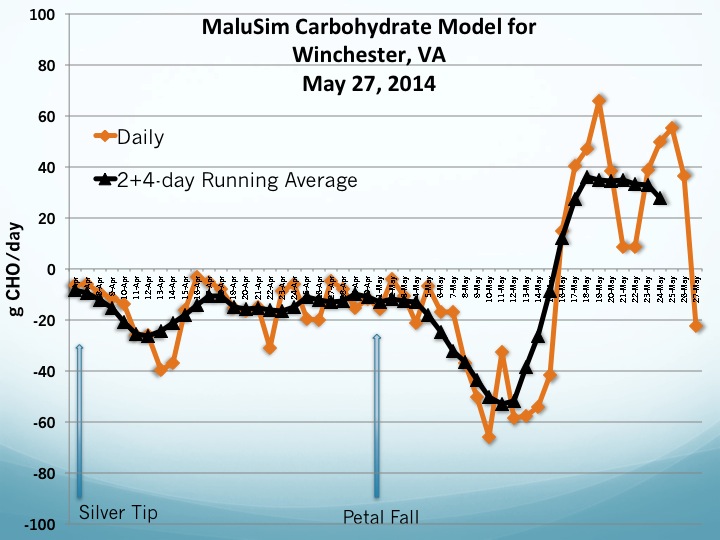
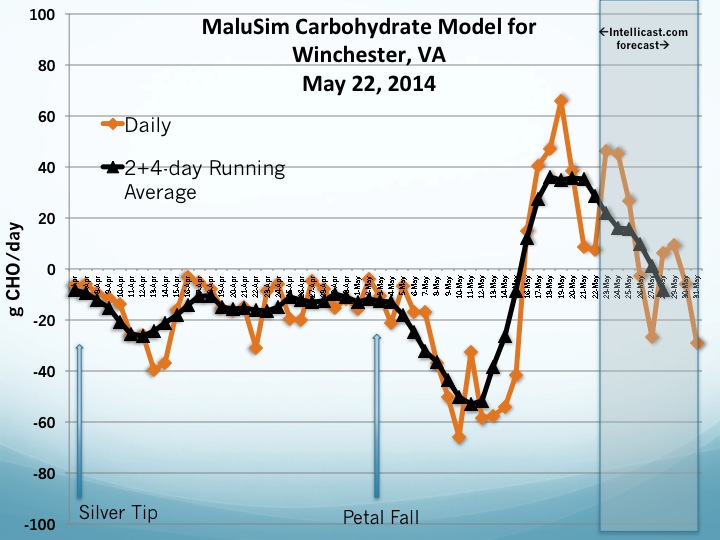
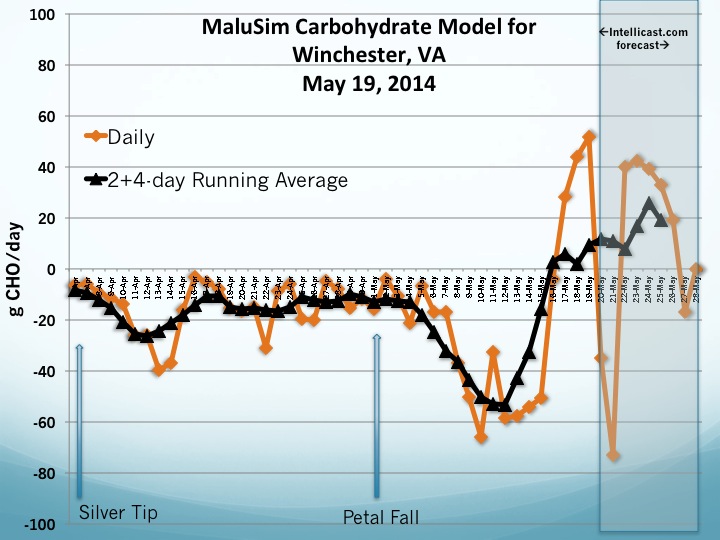
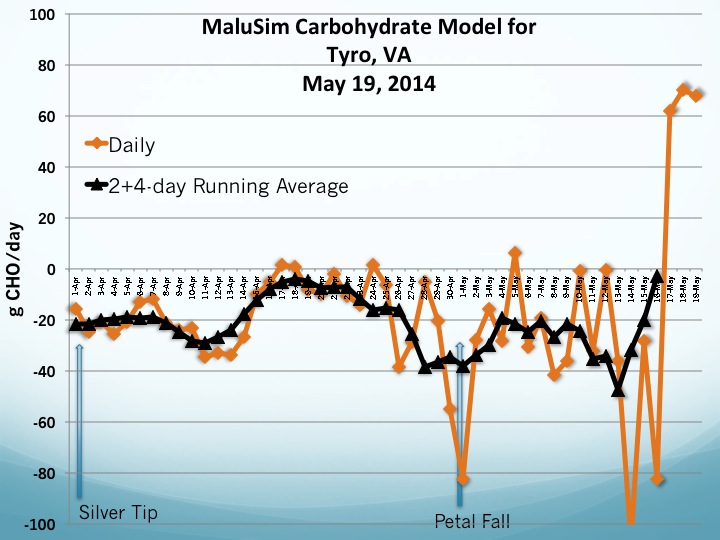
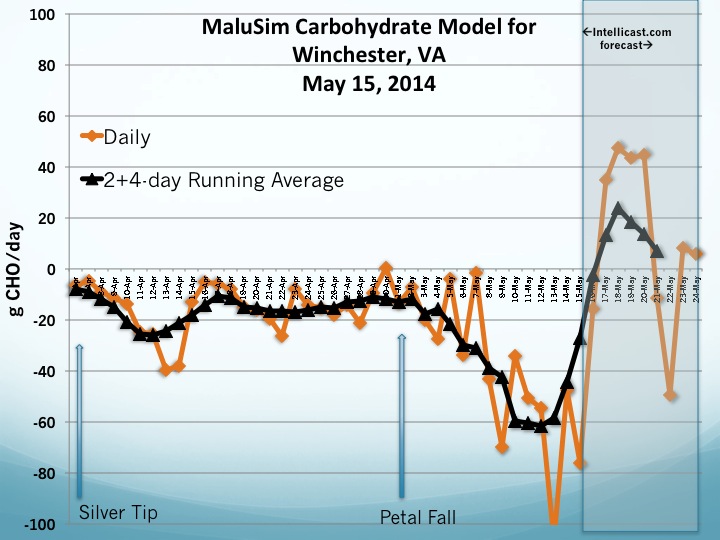 Thinning applications made on Monday through Wednesday of this week will likely see an excessive amount of thinning, especially if fruit was 8-12 mm in diameter. Thinners that were applied on Thursday will likely have a moderate to strong response. Thinners applied Friday (if it stops raining!) through the weekend will have a normal to weak response. If the weather forecast holds, growers should consider slightly increasing rates and using a surfactant for thinning applications made over the weekend. I’ll run another MaluSim model on Monday.
Thinning applications made on Monday through Wednesday of this week will likely see an excessive amount of thinning, especially if fruit was 8-12 mm in diameter. Thinners that were applied on Thursday will likely have a moderate to strong response. Thinners applied Friday (if it stops raining!) through the weekend will have a normal to weak response. If the weather forecast holds, growers should consider slightly increasing rates and using a surfactant for thinning applications made over the weekend. I’ll run another MaluSim model on Monday.